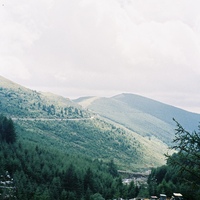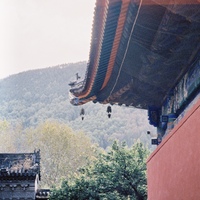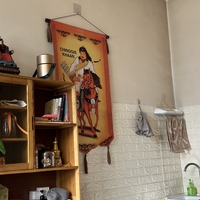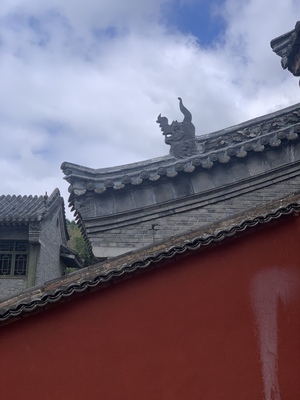Mount Wutai, also known as Mount Wufeng, Mount Wuxiang, and Mount Qingliang, is located in the northeastern part of Shanxi Province at the northern end of the Mount Taihang range. It is mainly within the jurisdiction of Wutai County and Fanshi County in Xinzhou City, Shanxi Province. In the broad sense, Mount Wutai refers to the entire mountain range that extends in all directions, which covers Wutai County, parts of Fanshi, Daixian, Yuanping, Dingxiang, Mengxian, and Fuping County in Hebei Province, with a total area of approximately 6,520 square kilometers. Narrowly speaking, Mount Wutai is bounded by the five main peaks, namely, the East, South, West, North, and Central Peaks, with a total area of approximately 2,837 square kilometers. Before 2009, the total planned area of the Wutai Mountain Scenic Area was approximately 592.88 square kilometers (if the 14 scenic spots outside the boundary are added, it reaches 599 square kilometers), and the peripheral expansion zone of the scenic area was 684.12 square kilometers. Generally speaking, the area enclosed by the five peaks is called the "inner circle," while the area outside the peaks is called the "outer circle." The central zone is the Taihuai Town. In 2009, Mount Wutai was successfully inscribed as a World Cultural Landscape Heritage site, including Taihuai core and buffer zones, as well as Foguang Temple core and buffer zones, with a total area of 607.27 square kilometers.
Location and Beliefs
Location
Buddhism and Beliefs
Mount Wutai is the main venue of Manjusri Bodhisattva. According to the "Qingliangshan Record" of the Ming Dynasty, the Indian monk Kasyapa Matanga (also known as Shemoteng) and the monk Kong Folan built the Dafu Lingyin Temple in the eleventh year of Emperor Shu of the Eastern Han Dynasty (68 AD), which marked the beginning of the spread of Buddhism in Mount Wutai. Since then, more and more Buddhist temples have been built in the area, and the number of incense offerings has increased day by day. By the time of the Northern and Southern Dynasties, there were already more than 200 temples in Mount Wutai, and during the Tang Dynasty, the number reached over 360, with more than 10,000 monks and nuns residing there. However, due to the large-scale destruction of Buddhism during the Northern Wei Dynasty, Northern Zhou Dynasty, Tang Dynasty, and Later Zhou Dynasty, the Buddhist temples in Mount Wutai were severely damaged. During the Song, Yuan, Ming, and Qing dynasties, the Buddhist temples in Mount Wutai were gradually recovered and expanded. In the Ming Dynasty, there were around 104 temples, and by the Qing Dynasty, the number reached 122. Among them, 97 were Qing temples and 15 were Huang temples, with 1,000 nuns living there. Currently, there are 126 relatively complete temples where religious activities are held. Although the number of temples cannot compare with that in history, it is still the mountain with the largest number of temples, the most concentrated distribution, and the most prosperous incense offerings among the Four Great Buddhist Mountains.
Mount Wutai is a renowned Buddhist holy site and holds an important position in Chinese Buddhist history. It is the only surviving Buddhist site in China where Han and Tibetan Buddhism coexist and the exoteric and esoteric teachings of Buddhism are transmitted and competed with each other. The mountain is also famous as a royal Buddhist training ground, attracting countless domestic and foreign tourists and pilgrims.
The two major lineages (i.e., Qing Temples and Huang Temples) of Han and Tibetan Buddhism converge in Mount Wutai, where monks and lamas live in harmony. Believers of the Han, Manchu, Mongolian, Tibetan, and Tu ethnic groups study Buddhist scriptures and spread Buddhist teachings together in Wutai Mountain, forming a unique landscape of Buddhism that sets Mount Wutai apart from other regions. There are many Buddhist denominations in Mount Wutai including the Yogacara, Vinaya, Huayan, Tiantai, Jingxi, Esoteric Buddhism, Tantrism, and Tibetan Buddhism. In addition, the Mofa denomination (also known as the Tenglan denomination) can only be found in Mount Wutai.






